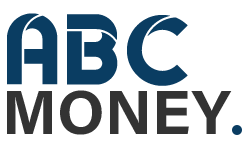What are the main forex industry stats for 2017, and why are these statistics important to you as a trader? This article spells out some of the little known facts about the forex market.
Introduction
What is the forex market? The forex market is not just a place where currencies are bought and sold on a daily basis. Sure it is a market for that activity, but it goes far beyond merely buying and selling currencies. The forex market is indeed a large market that brings together central banks, investment banks, commercial banks, hedge funds, retail traders, technology providers, statisticians, quants, software developers, analysts, just to name a few. It is therefore an entire industry which supports at least 20 different professions. This is just how large this industry is. So when talking about the forex industry statistics for 2017, it is important to know what industries within the industry, is represented in the stats that will be presented.
So what are the industry statistics for the forex market in 2017? Let’s take it from one sector in the forex industry to another.
Forex Daily Turnover
This is obviously the first place to start. How much money moves around the forex market on a daily basis? According to the last triennial survey of the Bank of International Settlement (BIS), the size of the forex market turnover as at 2016 was $5.2trillion. This makes the forex market the biggest financial market in the world.
However, after years of massive growth spurred by the deregulation of the market and entrance of all types of new technology, statistics also show that the forex market is actually shrinking. Coalition, a top industry analytics firm, also reports that trade volumes across the major trading hubs are down, and the number of people employed at trading desks is also falling. What could be responsible? Experts cite increasingly tougher regulations, as well as industry readjustments in the face of some major market-moving events such as the January 15, 2015 Swiss National Bank move. Lower interest rates which have made carry trade opportunities hard to come by have also been implicated.
The sheer size of the forex market means that it is still a place brimming with opportunities not just for traders, but for those offering value-added services to segments of the market.
Forex Market Technology
Under the forex market technology segment, we have the following:
- Trading technology – trading platforms.
- Trading technology – automated trading software and algorithmic trading solutions.
The market technology segment of the forex market is usually provided by smaller companies which service the retail and institutional ends of the market. On the retail end, we have the retail trading platforms (MT4/MT5, NinjaTrader, TradeStation, JForex, etc) as well as the various expert advisors and indicators. What has been the trend in the usage of the technology solutions behind the forex market?
- Trading Platforms
When it comes to retail forex trading, the most popular platform is the MetaTrader4 platform. It has been so successful that the successor to this platform, the MT5, has been unable to capture the market share that the MT4 has occupied for so many years.
- Forex robots
Many more users are turning to trading robots to perform their trades for them. Not only is the number of traders using algorithmic software and retail forex robots increasing, the usage of trading software has also brought in traders from age groups that were not active in the market several years ago. A report from Fortune.com shows that college kids are now trading with robots from their dorm rooms.
This information shows clearly that the use of technology is far outweighing human input when it comes to performing trades. With the appropriate technology, traders can get better fills, faster executions and more efficient trade management.
The Currencies
When it comes to currency analytics in the forex market, the data that most traders would be interested in are as follows:
- What currencies are the most traded currencies in the forex market? This is important because the costs of trading these currencies are lower, and market movements tend to be more predictable.
- What currencies trended the most, and which ones are the most trending right now? This is important information for long term traders.
The US Dollar is still the most traded currency in the world, followed by the Euro, the Japanese Yen, British Pound, Australian Dollar, Swiss Franc, Canadian Dollar, Mexican Peso, Chinese Yuan (RMB) and New Zealand Dollar, in that order. You can get the exact statistics for the most traded currencies from this authoritative source.
The most traded currencies tend to have more liquidity, more volatility and therefore more tradable opportunities at lower spreads.
Major Institutional Players
Most of the market volume in the forex market is generated by the big banks, who are also the liquidity providers. Institutional trading accounts for 94.5% of forex market volume. In terms of forex liquidity, Deutsche Bank holds the largest market volume, providing up to 21% of the market liquidity.
Generally speaking, there is a lot of competition from prime brokers to provide their clients with better tools for trading, trade execution and reporting. These tools can be used not just to trade spot forex, but also forex forwards, non-deliverable forward contracts (NDFs), forex swaps as well as FX options.
There is a lot to be explored in the forex market, and it is left for traders to discover what these opportunities are so that they can maximize their possibility of making good returns on their investments.

